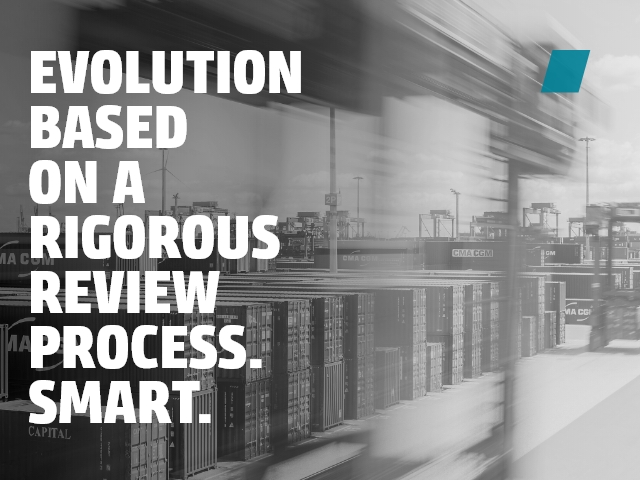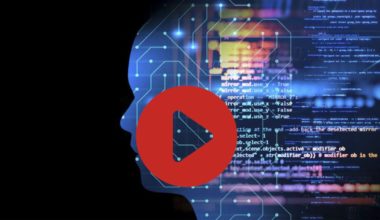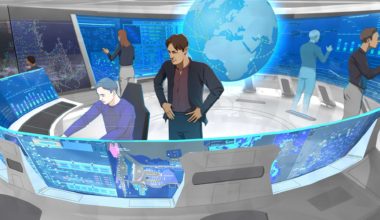“You are my creator, but I am your master.” These chilling words from Mary Shelley’s novel Frankenstein were first published on January 1, 1818, during the First Industrial Revolution, a period of great social and technological change. Considered by many to be the first work of science fiction, the story influenced not only literature, drama, and film but also the public’s perception of science.
2018 marks Frankenstein’s 200th anniversary, and at the dawn of the Fourth Industrial Revolution, the myth of creature turning on creator seems more relevant than ever before. Having escaped the laboratories of many tech companies, artificial intelligence (AI) is poised to change our society for good. While human-level AI is not yet looming around the corner, we constantly carry some form of AI in our pockets today. The irony is that Siri, Alexa, and Cortana, while comparable to Frankenstein in so many ways, aren’t perceived as frightening characters. Rather, these AI-enhanced assistants have become an ordinary, if not integral, part of our lives and workplaces.
This article will take you on a journey to the past, present, and future of AI. To unpack this story, we need to make a few stops along the way (feel free to skip ahead if you know the background). Firstly, we need a quick reference point for what AI is. Then, it is worth identifying why INFORM is qualified to speak on the subject. From here we will explore how AI is being applied in the container terminal market today. Finally, we’ll discuss what the role of humans is likely to be in the future and whether any of us will have jobs.
The Simple Truth behind AI
Artificial intelligence is an area of computer science concerned with building systems that demonstrate intelligent behavior. Most people find it difficult to agree on a precise definition of intelligence, so people’s views of what AI means also tend to diverge. For most people, when they hear the term artificial intelligence, or AI, they think of a General AI, or human-level AI, that can mimic all aspects of human intelligence. The simple truth, however, is that today, AI is far away from this. Instead, AI vendors have succeeded in building niche, or so-called Narrow AI, systems that know how to do reasonably specific things very well (for instance, play chess, translate between languages, understand natural language, or drive autonomous vehicles). It is these Narrow AI systems that are now making their way into our industry at a rapid pace as part of the Fourth Industrial Revolution.
In contrast with General AI’s goal of mimicking human intelligence, machine learning (ML) tools use algorithms to iteratively learn from and adapt to data, enabling computers to find hidden insights without being instructed where to look. A beginner’s example for this can be found in your email inbox in the form of spam filters. Simple rule-based filters are not very effective against spam since spammers can quickly update their messages to work around them. Instead, ML-enhanced spam filters continuously learn from a variety of signals and tailor themselves to the email needs of the individual user.
The Hidden Secret
Operations Research (OR), also referred to as “the science of better,” uses analytical methods (mathematical optimization, heuristic methods, and so forth) to analyze and consider vast amounts of data to optimize the planning and real-time control of processes. Depending on your view, either OR is a means to an AI outcome or OR and AI are complementary disciplines.

In the first view, Operations Research is a means to an artificial intelligence outcome. When you think of AI as the area of computer science concerned with building systems that demonstrate intelligent behavior, one could say that OR is part of AI. From a classical research perspective, this is inaccurate because OR and AI are two separate disciplines that have independently developed intelligence-based computing techniques. However, if you take the broad definition of AI, with building systems that demonstrate intelligent behavior, Operations Research could be classified as a part of artificial intelligence. Alternatively, AI is a technique that makes better predictions about the data that is fed into OR optimization algorithms.
Either way you choose to view the relationship between OR and AI, INFORM has been working with artificial intelligence for over two decades, with commercially available products in use since the early 2000s. More than 20 years ago, we started developing knowledge-based AI systems that were based on the concept of using fuzzy logic and fuzzy reasoning for representing human knowledge. Over the years, we’ve added machine learning as a second area in our AI activities, and the two are now working in parallel together.
Adding AI to Your TOS
As described in our past article, “Power up Your TOS,” our OR-based Optimization Modules work in conjunction with an existing TOS to drive terminal efficiency. This “add-on” relationship allows terminals to implement the power of Optimization Modules without significant changes. Further, in most cases, Optimization Modules work in the background without direct user interaction. Users interact with their existing software environment while benefiting from optimization with no timely retraining required.
To further enhance the decision-making quality, the same add-on relationship can be used to connect a machine learning platform to the optimization process (see Figure). There are basically two use cases: a) analyze data to fine-tune the models and rules of the Optimization Module, and b) analyze data to improve data quality that is fed into the Optimization Module.
Optimization Modules typically run on a mixture of different data, for example, ETA/ETD of trains and ships, ASC or RTG travel speeds, container bookings, and truck gate-in registration. Some of these are often based on average or historical values, for example, the truck check-in times or pre-check times of incoming trains. While this level of quality is sufficient to make the best-informed decisions, values offering higher precision at this stage can improve the calculations. Here’s an example: A time slot management system provides shippers the ability to book allocated inbound arrival time slots. However, delayed deliveries are commonplace and actual truck arrival times may vary over the course of a business day (off-peak vs. high-peak). They may vary on different weekdays and weather conditions. They may even vary for different haulers and/or drivers.
The ML will analyze huge amounts of data very quickly and present any findings and correlations in easy-to-digest dashboards to create insights for humans. These insights form the basis for expert discussions. In cooperation with INFORM, the outcome can be used to fine-tune the models and rules of the optimization module (see (a) in the figure). Alternatively, the insights from the ML may be fed back automatically into the software, where they replace previous average or historical values (see (b) in the figure).
Besides data from the TOS and Optimization Modules, the ML can also be connected to various other internal and external data sources (e.g., port community systems, weather apps, etc.) to further enrich the data basis. The ML can be operated regularly, on a periodic basis, or on an event-triggered basis.

SYNCROTESS
Add-on Module

Machine Learning improves the accuracy of operational data used for real-time decision-making and long-term strategic management planning.
Chatbot – Is It Alive?
In the riveting laboratory scene when the monster is brought to life, Dr. Frankenstein shouts, “Look! It’s alive.” Today, computer programmers can have similar moments when they develop chatbots. Chatbots are one of the most common AI-based applications. They are designed to sound and type like human beings and continuously learn and develop through AI and ML.
To make the latest technologies and applications available to the terminal industry, INFORM recently released a chatbot add-on for their maritime and inland terminal solutions. It receives both voice and text-based queries from a broad range of input sources, recognizes the request, searches for the answer, and sends the answer back as a text response in real time.
The chatbot quickly allows a status check of KPIs, containers, and/or equipment without calling anyone. Management, with no previous training in the system, can ask the software directly to quickly access KPI data on the fly in a manner that is convenient to them.
AI – Frankenstein Reloaded?
Two hundred years later, we find ourselves in a prologue to a new Frankenstein story. What are the lessons learned?
One of Dr. Frankenstein’s gravest errors was to neglect his creation. He fled from its presence, giving up the opportunity to supervise, nurture, and educate his invention. Today, the aim of AI development should not be to make a “digitized being” better than us, but rather to make “it” beneficial to us.
Technology moves ahead, but so does the human mind and our attitude toward technology. A senior operations manager from the Baby Boomer generation might have a different opinion on the usefulness of chatbots compared to a millennial management trainee. Also, a seasoned straddle carrier driver will be more hesitant to accept decisions and work orders from an AI system than a digital native who is about to start a career in our business.
By 2025, millennials will make up 75% of the global workforce. They have grown up with very fast communication capabilities and high tech is woven into all aspects and areas of their lives. What’s more, the generation born after 2010 – the “AI natives” – will only know a world with artificial technology.
How we manage this human transition is going to define our industry. At this point, there are more questions than answers, such as, how do we best utilize highly skilled staff who are in traditional roles? How do you prepare these staff for the future and how will their roles change? If we retrain them, who bears the financial and social costs of retraining them? How do we attract a young, millennial-aged workforce that has the new skills we’ll need in the future?
To position ourselves for the future, it is the role of all stakeholders in the port industry to take a degree of responsibility. The question isn’t whether AI is coming or not, but whether as an industry we will be well prepared or caught off guard when we realize that AI is here – or, as Mary Shelley wrote in Frankenstein, “Nothing is so painful to the human mind as a great and sudden change.”


